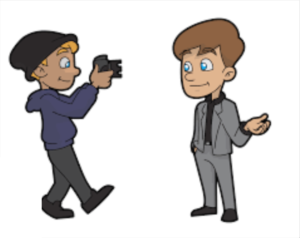In today’s digital age, learning art has been revolutionized. The internet is an invaluable resource for those looking to improve their drawing skills. Whether you’re a beginner or an intermediate artist, online learning platforms offer an accessible, flexible, and thorough way to enhance your artistic abilities.
The Benefits of Developing Drawing Skills Online
-
- Accessibility and Convenience
Online learning platforms are accessible 24/7, allowing learners to practice at their own pace and schedule. This flexibility is crucial for those juggling other responsibilities.
-
- Accessibility and Convenience
-
- Wide Range of Resources
The internet abounds with drawing tutorials, catering to all skill levels and artistic interests, from basic sketches to advanced techniques.
-
- Wide Range of Resources
-
- Feedback and Community Support
Online courses and forums often provide opportunities for feedback from instructors or peers, fostering a supportive community environment.
-
- Feedback and Community Support
-
- Cost-Effective Learning
Online courses are generally more affordable than traditional art classes, making them accessible to a wider audience.
-
- Cost-Effective Learning
-
- Tailored Learning Experience
Online learning allows you to choose courses that match your interests and skill level, offering a personalized approach.
-
- Tailored Learning Experience
Techniques and Approaches in Online Drawing Learning
Online drawing courses like Drawing for Beginners introduce a variety of techniques and approaches that cater to both beginners and those looking to refine their skills. Here’s a deeper dive into some of these methods:
-
Understanding Light and Shadow
- A fundamental aspect of drawing is understanding how light and shadow work. This includes learning about the different types of shadows (like cast shadows and form shadows), and how they interact with various shapes and forms. Techniques such as cross-hatching can be employed to create depth and texture.
-
Saturation and Color Theory
- Adding saturation to shadows is just one way to bring vibrancy and realism to your work. Online courses often delve into color theory, teaching how different colors interact and affect the mood of a piece. Understanding complementary and analogous colors, for instance, is crucial in choosing palettes that work harmoniously together.
-
Using Markers Effectively
- Markers are a versatile tool for adding saturation and blending colors. Courses provide guidance on techniques like layering and blending with markers, which can be essential for creating smooth transitions and realistic textures.
-
Perspective Drawing
- Perspective drawing is another critical skill taught in online courses. This includes learning one-point, two-point, and three-point perspective to create the illusion of depth and space in a drawing, which is essential for realistic and architectural drawing.
-
Figure Drawing and Anatomy
- For artists interested in human forms, understanding anatomy is key. Online courses cover the basics of human anatomy, teaching how to accurately portray the human body in various poses and actions.
-
Sketching Techniques
- Sketching is the foundation of drawing. Learning how to quickly capture the essence of a subject with loose, expressive lines is a skill that online courses often emphasize. This includes exercises in gesture drawing, which is particularly useful for capturing movement and form.
-
Digital Drawing Tools
- With the advent of digital art, many courses now include tutorials on using digital drawing tools like tablets and software like Adobe Photoshop or Procreate. These lessons cover basics like layers, brushes, and digital coloring techniques.
-
Composition and Design
- Composition is crucial in art. Online learning resources teach how to balance elements in a drawing, use leading lines, and create a focal point that attracts the viewer’s eye.
-
Texture and Detailing
- Detailed texturing can bring a drawing to life. Techniques for creating different textures, like the roughness of bark or the softness of fur, are often covered in depth.
-
Experimentation and Personal Style Development
- Finally, online courses encourage experimentation. They provide guidance on exploring different mediums and styles, helping artists to develop a unique personal style that resonates with their artistic voice.
By embracing these techniques and approaches, learners can significantly enhance their drawing skills, bringing a professional touch to their artwork. The beauty of online learning is the opportunity to access a wide range of styles and methods, offering a comprehensive and enriching artistic education.
Real-World Applications of Drawing Skills
The ability to draw extends far beyond the realms of art and creativity, permeating various aspects of everyday life and professional fields. Here are some of the key real-world applications of drawing skills:
-
- Enhanced Creativity and Problem-Solving in Various Industries
In fields like engineering, architecture, and design, drawing skills are crucial for visualizing and planning projects. Being able to sketch ideas quickly aids in conceptualizing and communicating complex designs or solutions.
-
- Enhanced Creativity and Problem-Solving in Various Industries
-
- Improved Communication Skills Across Disciplines
Drawing is a fundamental form of visual communication. In marketing and advertising, for instance, storyboard sketches are used to plan and present ideas for campaigns. In education, teachers often use drawings to illustrate complex concepts in a more understandable way.
-
- Improved Communication Skills Across Disciplines
-
- Therapeutic and Mental Health Benefits
Drawing is recognized for its therapeutic properties, often used in art therapy to help individuals express emotions that are hard to verbalize. It can also improve mental health by providing a stress-relieving outlet, fostering mindfulness, and enhancing cognitive abilities.
-
- Therapeutic and Mental Health Benefits
-
- Development of Fine Motor Skills and Coordination
Regular drawing practice develops fine motor skills and hand-eye coordination. This is especially beneficial for children in their developmental years but is also advantageous for adults, particularly in professions requiring precision and detail.
-
- Development of Fine Motor Skills and Coordination
-
- Career Opportunities in Creative Fields
Proficient drawing skills open doors to various career paths in the arts, such as graphic design, illustration, animation, and fine arts. In the digital age, these skills are also increasingly sought after in UI/UX design and video game development.
-
- Career Opportunities in Creative Fields
-
- Contribution to Cultural and Historical Documentation
Drawing plays a vital role in documenting and preserving cultural and historical narratives. Illustrators and sketch artists often capture significant events, traditions, and stories through their artwork, contributing to the collective memory of societies.
-
- Contribution to Cultural and Historical Documentation
-
- Influence on Personal and Professional Branding
In the era of personal branding, having drawing skills can be a unique asset. Professionals can use their skills to create distinctive logos, business cards, and other branding materials that stand out.
-
- Influence on Personal and Professional Branding
-
- Application in Scientific Research and Education
In fields like biology, geology, and archaeology, drawing is used to record observations and discoveries accurately. Detailed illustrations in scientific publications help communicate findings more effectively than words alone.
-
- Application in Scientific Research and Education
-
- Utilization in the Entertainment Industry
The entertainment sector, particularly in film and theater, relies heavily on drawing for set designs, costume sketches, and makeup plans, forming the visual backbone of productions.
-
- Utilization in the Entertainment Industry
-
- Integration in Technological Advancements
Drawing skills are integral to the development of virtual reality environments, video games, and animation. They are also crucial in the conceptual stages of designing user interfaces and user experiences in software and web development.
-
- Integration in Technological Advancements
By mastering drawing skills, individuals can unlock a multitude of opportunities and applications, transcending traditional boundaries and impacting various sectors of society.
Conclusion
Developing drawing skills through online platforms offers flexibility, diversity, and a personalized learning experience. Whether aiming for professional artistry or pursuing drawing as a hobby, online resources like Drawing for Beginners provide an excellent starting point to unlock your creative potential.




